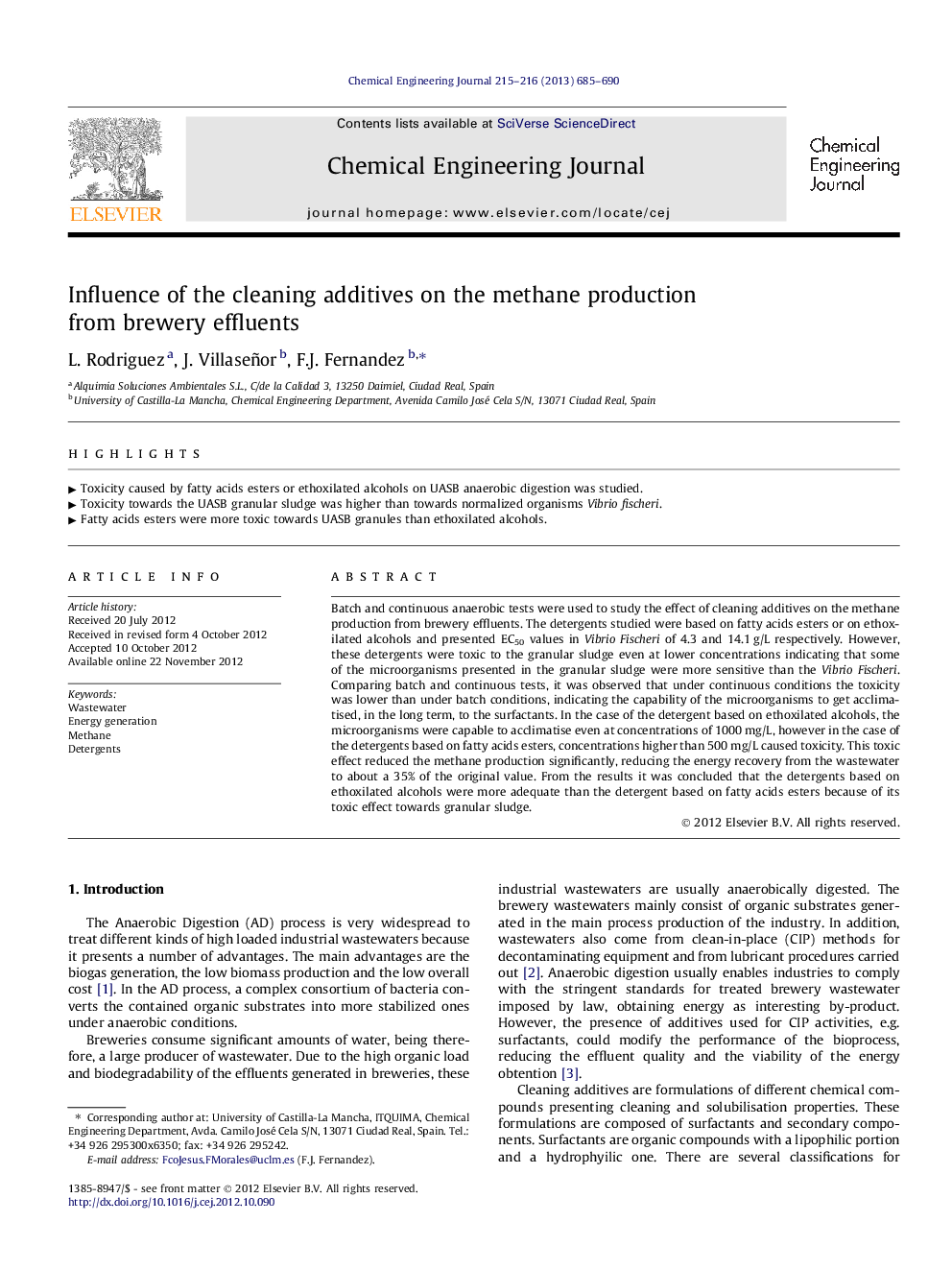| Article ID | Journal | Published Year | Pages | File Type |
|---|---|---|---|---|
| 148977 | Chemical Engineering Journal | 2013 | 6 Pages |
Batch and continuous anaerobic tests were used to study the effect of cleaning additives on the methane production from brewery effluents. The detergents studied were based on fatty acids esters or on ethoxilated alcohols and presented EC50 values in Vibrio fischeri of 4.3 and 14.1 g/L respectively. However, these detergents were toxic to the granular sludge even at lower concentrations indicating that some of the microorganisms presented in the granular sludge were more sensitive than the Vibrio fischeri. Comparing batch and continuous tests, it was observed that under continuous conditions the toxicity was lower than under batch conditions, indicating the capability of the microorganisms to get acclimatised, in the long term, to the surfactants. In the case of the detergent based on ethoxilated alcohols, the microorganisms were capable to acclimatise even at concentrations of 1000 mg/L, however in the case of the detergents based on fatty acids esters, concentrations higher than 500 mg/L caused toxicity. This toxic effect reduced the methane production significantly, reducing the energy recovery from the wastewater to about a 35% of the original value. From the results it was concluded that the detergents based on ethoxilated alcohols were more adequate than the detergent based on fatty acids esters because of its toxic effect towards granular sludge.
• Toxicity caused by fatty acids esters or ethoxilated alcohols on UASB anaerobic digestion was studied. • Toxicity towards the UASB granular sludge was higher than towards normalized organisms Vibrio fischeri. • Fatty acids esters were more toxic towards UASB granules than ethoxilated alcohols.
